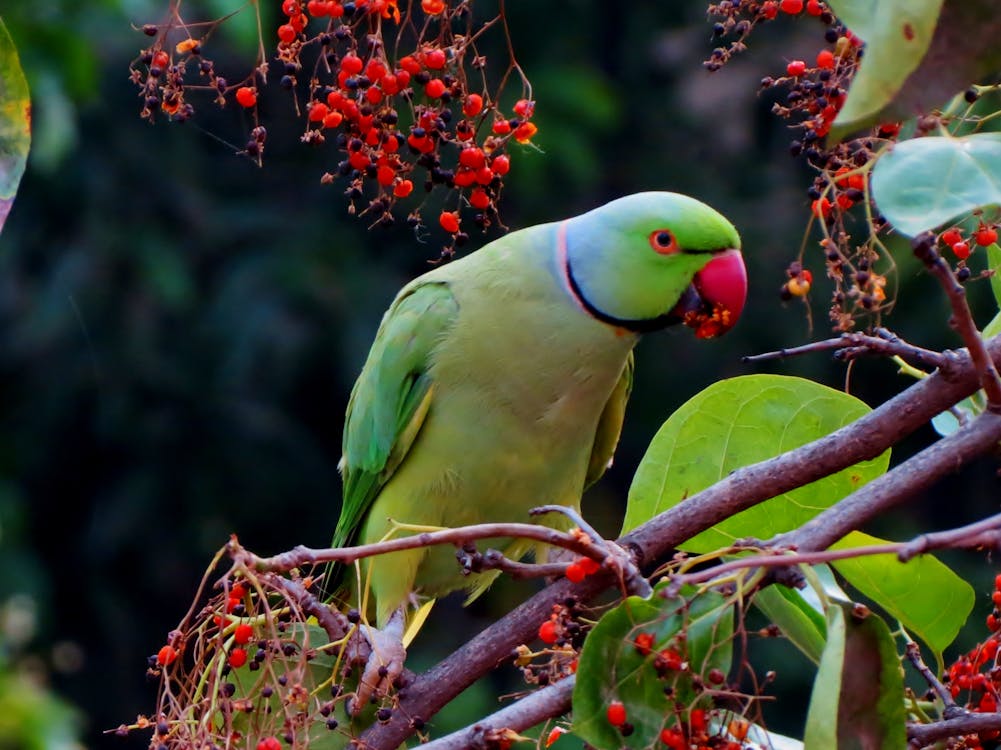Birds are often thought of as simple creatures, but recent research has revealed that many species possess remarkable intelligence, challenging our understanding of avian cognition. Among the most intelligent birds, we see problem-solving skills, sophisticated communication and cognitive abilities that rival those of primates. Here’s a dive into some of the most surprising facts about these smartest feathered friends.
1. Crows Are the Einsteins of the Bird World
Crows, particularly the New Caledonian crow, are renowned for their exceptional intelligence. These birds can solve complex puzzles, use tools, and even plan for the future. In one famous study, crows were observed bending twigs into hooks to extract insects from crevices—a behavior that demonstrates not just tool use, but tool modification. They’ve also shown the ability to understand cause and effect, remember human faces, and hold grudges. Crows’ intelligence is often compared to that of great apes, showcasing their impressive cognitive skills.
2. The African Grey Parrot Can Master Human Language

African grey parrots are celebrated for their advanced communication skills. These parrots can learn an impressive vocabulary and use words in context. One famous African grey, Alex, demonstrated the ability to count, recognize colors, and understand concepts like “bigger” and “smaller.” Alex’s cognitive abilities suggest that these parrots have a remarkable grasp of language and an understanding of the world that goes beyond mere mimicry.
3. Magpies Pass the Mirror Test
The mirror test is a classic measure of self-awareness. It involves placing a mark on an animal in a location they cannot see without a mirror and then observing whether the animal uses the mirror to investigate and remove the mark. European magpies are among the few non-mammal species to pass this test, indicating a level of self-awareness. This ability to recognize themselves in a mirror shows a sophisticated understanding of their own bodies and minds.
4. Kea Parrots Exhibit Playful Intelligence
Kea parrots from New Zealand are not just known for their vibrant plumage but also for their playful intelligence. These parrots engage in problem-solving games and exhibit behaviors that suggest a high degree of curiosity and social interaction. They’ve been observed using tools to retrieve food and engaging in complex social behaviors like cooperative problem-solving and play. Their playful nature is indicative of a keen intellect and a love for challenges.
5. Pigeons Can Recognize Famous Faces
Pigeons, often underestimated, have shown surprising cognitive abilities. In a study, pigeons were trained to recognize and remember human faces. They could differentiate between photos of famous people and non-famous people, even after long periods. This suggests that pigeons have the capacity for complex visual recognition and memory, making them more adept at processing information than one might assume.
6. The Clark’s Nutcracker Has an Impressive Memory
Clark’s nutcracker, a bird found in North America, exhibits extraordinary spatial memory. During the winter, these birds store thousands of pine seeds in various locations to ensure they have enough food for the months ahead. They can remember the locations of their caches with remarkable precision, even under snow. This ability to recall the exact locations of thousands of seeds is a testament to their advanced memory and navigational skills.
7. The Blue Jay Can Mimic the Calls of Other Birds
Blue jays are known for their intelligence and mimicry skills. They can imitate the calls of other birds, including hawks, which they use to their advantage. By mimicking the calls of predatory hawks, blue jays can scare off other birds and gain access to food sources. This ability to mimic and use deception shows a high level of cognitive flexibility and strategic thinking.
8. The Great Tit Solves Complex Problems

Great tits, a species of small passerine birds, have demonstrated impressive problem-solving skills in laboratory settings. In one experiment, they were able to use a string to pull a piece of food toward them, showcasing their ability to understand cause and effect. This kind of problem-solving is not only a sign of intelligence but also an indicator of how these birds can adapt to new and challenging situations in their environment.
9. The Raven’s Problem-Solving Skills Rival Those of Apes
Ravens are among the most intelligent birds and have exhibited problem-solving abilities that are comparable to those of great apes. In experiments, ravens have used tools, planned for the future, and solved complex problems involving multiple steps. They can also understand the concept of a causal relationship and demonstrate strategic thinking, such as using tools to retrieve food that is out of reach.
10. Birds Have Complex Social Structures and Communication
Many bird species have complex social structures and communication systems. For instance, the social behaviour of the superb fairy-wren, an Australian bird, includes cooperative breeding where individuals other than the parents help care for the young. Additionally, birds like the eastern meadowlark have intricate songs that vary by region and can convey different meanings to other birds. This level of social complexity and communication indicates a high degree of cognitive sophistication.
Conclusion
Birds are far more intelligent and capable than one might expect. From the problem-solving prowess of crows to the linguistic skills of African grey parrots, these feathered friends exhibit a range of cognitive abilities that challenge our perceptions of avian intelligence. As researchers continue to study birds, they uncover even more about the sophisticated ways in which these creatures interact with their environment and each other. The next time you see a bird, remember that behind those curious eyes and cheerful chirps might be a mind capable of remarkable feats.


1 Comment
Pingback: 10 Fascinating Fun Facts About Birds that Will Amaze You - Exciting Facts